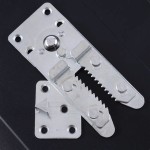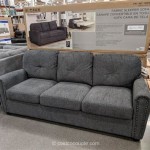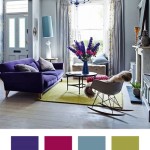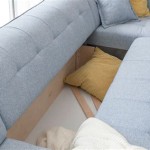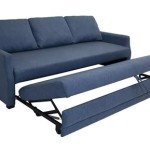Hard Leather Sofas: A Guide to Durability and Style
Hard leather sofas represent a distinctive segment of the furniture market, appealing to those who prioritize durability and a particular aesthetic. Understanding the characteristics of hard leather, its advantages and disadvantages, and the factors influencing its firmness can help consumers make informed decisions when selecting a sofa.
The perceived hardness of leather is determined by several factors, including the type of hide, the tanning process, and the finishing treatments applied. Full-grain leather, derived from the outermost layer of the hide, typically exhibits greater firmness than top-grain or split-grain leather. Full-grain leather retains the natural imperfections and grain patterns, contributing to its robust character and resilience.
Tanning, the process of converting rawhide into leather, also plays a crucial role in determining hardness. Vegetable tanning, a traditional method utilizing natural tannins from plants, typically produces firmer leather compared to chrome tanning, a faster process employing chromium salts. Vegetable-tanned leather develops a rich patina over time, further enhancing its character.
Finishing treatments, such as pigments, oils, and waxes, can influence the final feel of the leather. Heavily pigmented or coated leathers tend to feel firmer than those with minimal finishing. Aniline leather, which features minimal surface treatment, allows the natural characteristics of the hide to show through, but it is typically softer than heavily finished leathers.
One of the primary advantages of hard leather sofas is their exceptional durability. The dense, tightly packed fibers of hard leather resist wear and tear, making them ideal for high-traffic areas and households with pets or children. They are less susceptible to scratches, scuffs, and punctures compared to softer leathers.
Hard leather sofas also offer a distinct aesthetic appeal. The firm surface provides a structured, tailored look, often associated with traditional or classic interior design styles. The inherent variations in the grain and color of hard leather contribute to a unique, natural appearance, adding character to a room.
While durability and aesthetics are key advantages, the firmness of hard leather can be perceived as a disadvantage by some. Hard leather sofas may not offer the same level of immediate comfort as softer, more pliable leathers. They may require a break-in period for the leather to soften and conform to the body.
Maintaining the appearance and longevity of a hard leather sofa requires specific care. Regular dusting and occasional cleaning with a leather conditioner help preserve the leather's natural oils and prevent cracking. Avoiding exposure to direct sunlight and excessive heat helps maintain the leather's integrity.
The price of hard leather sofas can vary significantly depending on the type of leather, the construction of the frame, and the overall design. Full-grain, vegetable-tanned leather sofas are typically more expensive due to the quality of the materials and the labor-intensive tanning process.
When considering a hard leather sofa, factors such as the intended use, the desired aesthetic, and the budget should be taken into account. Assessing the firmness of the leather by physically sitting on the sofa is essential. This allows individuals to determine whether the level of hardness aligns with their comfort preferences.
The construction of the sofa frame is equally important. A robust frame made of hardwood ensures stability and longevity. Examining the joinery and the overall construction quality can provide insights into the sofa's durability.
The style and design of the sofa should complement the existing décor of the room. Hard leather sofas are available in various styles, ranging from traditional Chesterfield designs to more contemporary silhouettes. Choosing a style that aligns with the overall aesthetic of the space creates a cohesive and visually appealing environment.
Considering the long-term investment represented by a hard leather sofa, thorough research and careful consideration of these factors are crucial. Understanding the characteristics of hard leather, its maintenance requirements, and the overall construction quality empowers consumers to select a sofa that meets their needs and preferences.
Retailers specializing in furniture and home furnishings typically offer a range of hard leather sofas. Visiting showrooms and comparing different models allows consumers to experience the firmness of the leather firsthand and assess the overall quality of construction. Online resources and customer reviews can provide valuable insights into the experiences of other owners of hard leather sofas.
Ultimately, the decision to purchase a hard leather sofa is a personal one. By carefully evaluating the advantages and disadvantages, considering the specific needs and preferences, and investing time in research, consumers can make an informed decision and select a sofa that will provide both durability and aesthetic appeal for years to come.

Chesterfield 3 2 Seater Real Antique Leather Sofa Suite Offer

Art Deco Sofa Leather Sofas

Home The Leather Sofa Company

51 Leather Sofas To Add Effortless Refinement Any Home

How To Spot Great Quality Leather Top Grain Vs Full

Lifestyle Design With Sofasofa Real Leather Sofas Vintage Sofa Brown Bed

Art Deco Sofa Leather Sofas

Genuine Leather Couches South All You Need To Know

Shanelle Leather Sofa Set

Modern Looks For Leather Sofas Centsational Style


